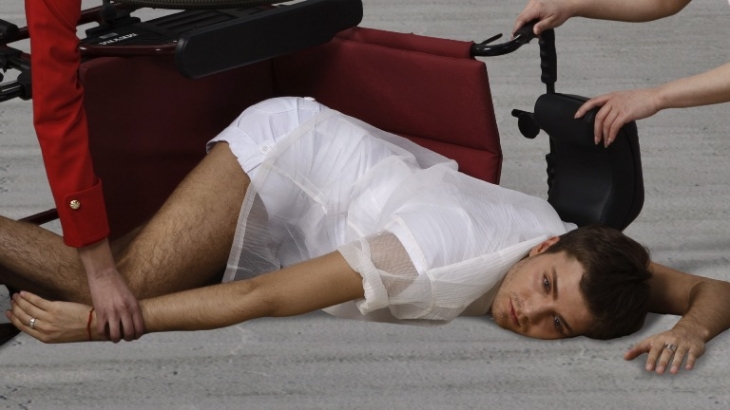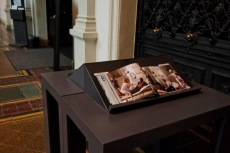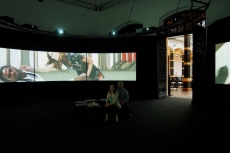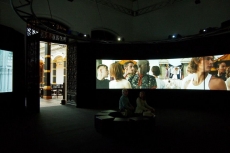The Liminal Space Trilogy
















© AES+F. Courtesy Multimedia Art Museum, Moscow & Triumph Gallery, Moscow
© AES+F. Courtesy Multimedia Art Museum, Moscow & Triumph Gallery, Moscow
© AES+F. Courtesy Multimedia Art Museum, Moscow & Triumph Gallery, Moscow
© AES+F. Courtesy Multimedia Art Museum, Moscow & Triumph Gallery, Moscow
© AES+F. Courtesy Multimedia Art Museum, Moscow & Triumph Gallery, Moscow
© AES+F. Courtesy Multimedia Art Museum, Moscow & Triumph Gallery, Moscow
© AES+F. Courtesy Multimedia Art Museum, Moscow & Triumph Gallery, Moscow
© AES+F. Courtesy Multimedia Art Museum, Moscow & Triumph Gallery, Moscow
© AES+F. Courtesy Multimedia Art Museum, Moscow & Triumph Gallery, Moscow
© AES+F. Courtesy Multimedia Art Museum, Moscow & Triumph Gallery, Moscow
© AES+F. Courtesy Multimedia Art Museum, Moscow & Triumph Gallery, Moscow
© AES+F. Courtesy Multimedia Art Museum, Moscow & Triumph Gallery, Moscow
© AES+F. Courtesy Multimedia Art Museum, Moscow & Triumph Gallery, Moscow
© AES+F. Courtesy Multimedia Art Museum, Moscow & Triumph Gallery, Moscow
© AES+F. Courtesy Multimedia Art Museum, Moscow & Triumph Gallery, Moscow
© AES+F. Courtesy Multimedia Art Museum, Moscow & Triumph Gallery, Moscow
Buffalo, 20.06.2015—13.09.2015
exhibition is over
Albright-Knox Art Gallery
1285 Elmwood Avenue, Buffalo, New York 14222-1096, USA
www.albrightknox.org
Share with friends
As part of "SCREEN PLAY: LIFE IN AN ANIMATED WORLD" exhibition
AES+F: Tatiana Arzamasova, Lev Evzovich, Evgeny Svyatsky, Valdimir Fridkes
Exhibition shedule
-
28.09.2012—3.12.2012
Berlin
Martin-Gropius-Bau
-
20.06.2015—13.09.2015
Buffalo
Albright-Knox Art Gallery
For the press
Characteristically, the AES+F group (Tatyana Arzamasova, Lev Evzovich, Evgeny Svyatsky + Vladimir Fridkes) poses philosophical, existential and social questions in a very tough manner, it gives a very distinct articulation of an artistic concept that contains a clearly expressed prophetic element. Each new project from the group is a provocative act that splits at the seams our habitual conceptions of good and evil, of sin and innocence, of a benefactor and of a prophet. Their work always reflects the global social-cultural situation which is as yet not manifest, but hanging in the air. They force you to sense and conceive of the present ahead of time.
The Trilogy is the first joint presentation of three video projects by the AES+F group — Last Riot (originally shown in the Russian pavilion at the Venice Biennale, 2007), Trimalchio’s Feast (first shown in Venice in 2009), and Allegoria Sacra (premiered in 2011 at the Multimedia Art Museum as part of the parallel program of the Moscow Biennale of Modern Art). The Trilogy is an attempt to analyze the globalization of reality in the 21st century from the point of view of traditional reference points that for many centuries define the structure of the universe: Heaven, Hell, Purgatory.
Last Riot, the last of five projects created by the artists between 1997 and 2007, is devoted to the problem of childhood and adolescence in modern society and in modern culture. Every civilization creates its own childhood mythology, while at the same time children and adolescents serve as a magnifying mirror of that society. Today’s children already live in a virtual world more than they live in the real world. This world is packed with computer games, which put the instruments of murder into their hands and set them the task of hunting down and destroying their opponents. In the virtual reality, where there is no direct contact between living beings, and no real suffering or compassion, an irreversible transformation of the individual is taking place, the consequences of which we are not yet certain of. Last Riot is a 3D animation, which creates a model of the cyber-space born out of the real and the media worlds, a fantasy landscape of a new heaven where time stopped. Here, past epochs exist alongside the future, and creation coexists with disintegration. Artists populate this landscape with glamorous, androgynous teenagers who undertake a revolutionary war against themselves. In this battle, there is no distinction between victim and perpetrator, male and female, good and evil, predestination and its opposite. The participants in the Last Riot live through the myths of all times and peoples, intermingled with the myths of modern mass culture, the clichés and stereotypes of computer animation. Their somnambulistic dance-combat recalls the aesthetics of Caravaggio. Like the Flying Dutchman, doomed to eternal wanderings, the hero of this cyber-epic is doomed to eternal conflict. This is a battle without blood or pain, a contact without contact. Each generation creates its own version of an artistic apocalypse in music, painting and other forms of art. The Last Riot is a post-apocalyptic vision, the latest in this line.
The artists began working on the Trimalchio’s Feast project back in the early 2000s, when the culture of total consumerism and narcissism, the feature of the pre-Crisis period of the second half of the noughties, was only just beginning to reveal its contours. Work on the project was completed at the height of the post-Crisis agonies. The alienated and captivating action of the Trimalchio’s Feast, which takes place in a five-star hotel and is a symbol of delight and prosperity, acts as a magical mirror in which time is reflected, along with its worst, self-obsessing element. The world of people preoccupied with self-indulgence, where «servants» and «masters» exchange roles in accordance with geopolitical and socio-economic shifts in modern civilization, is subjected to an absurdist auto-decomposition. Trimalchio’s Feast has a tangential link to ancient literature, and first and foremost to the work of Petronius. However, history, indeed, develops in a spiral and it is hard not to recall here Verlaine’s line: «Oh, the Roman world of the time of the fall...»
If in the Trilogy project the Last Riot allegorically symbolizes Hell, then Trimalchio’s Feast allegorically symbolizes the Heaven that the mass media presents us with today, offering to cleanse and purify our skin and organisms, though at the same time not providing us with anything that might fill our spiritual vacuums.
The last part of the Trilogy, Allegoria Sacra, is a dialogue with a picture of the same name by Giovanni Bellini. The picture’s theme is mysterious. Extremely varied characters from Christian and ancient mythology are collected along a balustrade and on the shores of a broad river, surrounded by hills, on which in the distance one can make out rural homes and palazzos. St. Sebastian, Madonna, a Centaur, little children playing, a Saracen Muslim, a man with a sword in his hand like St. Paul, a peasant with a mule in the background, two beautiful ladies, one of them recognizably St. Catherine, a naked man recalling Job — that is by no means a comprehensive list of all the characters that Bellini brought together in one picture. According to one theory popular among researchers, the artist in this work depicted Purgatory on the shores of the River Styx or River Lethe. In Allegoria Sacra by the AES+F group, the action unfolds in an international airport, where representatives of various social groups, races, nationalities and confessions are lingering in expectation of their delayed flights. Each of them sees their dreams, and the visions of passengers merge into a new mythical reality, a metaphor for modern civilization. This surrealist mixture of the icons of religions old and new, stereotypes from the mass media, fantasy comics and films, reaches its culmination at the point of the death of the old man Job and the birth of a new Messiah, a mutant baby. That the group has turned to Bellini’s work is no accident. This great artist worked at the turn of the two epochs, when the aesthetics of the Renaissance were only just taking shape, and beginning to emphasize the value of an individual human personality. Modern civilization is also on the brink of an evolutionary leap forward. With the appearance of Web 2.0, the birth of a new collective nervous system is taking place before our very eyes, along with an incredible intensification of information flows. Will these new processes lead to new achievements of human civilization, or will they result in its destruction? We will find it out in the near future.
The AES+F group has developed a new language in their works. Analyzing the modern world, using its mythology and cutting-edge technologies, the artists exploit fashion photography, advertising media, popular mass and youth culture, elements of Hollywood cinema and the classical aesthetics of the old masters for the creation of their own visual language, presenting the pressure points of today’s reality.
Olga Sviblova, Curator


















